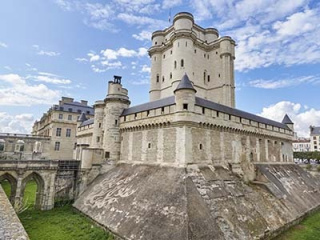Sotheby's International Realty
- 138 Avenue Victor Hugo
- 75116 PARIS, France
- +33 1 40 60 50 00
Sotheby's International Realty
- 50 rue d'Auteuil
- 75016 PARIS, France
- +33 1 56 26 56 55
Sotheby's International Realty
- 82 Avenue de Wagram
- 75017 PARIS, France
- +33 1 46 22 27 27
Sotheby's International Realty
- Place Sainte Foy - 2 Rue de Chézy
- 92200 NEUILLY, France
- +33 1 41 43 06 46
Sotheby's International Realty
- Place Sainte Foy - 2 rue de Chézy
- 92200 NEUILLY, France
- +33 1 41 25 00 00
Sotheby's International Realty
- 37-39 rue de Turenne
- 75003 PARIS, France
- +33 1 48 87 14 41

Vincennes

Vincennes, located in the Val-de-Marne at the gates of Paris, is a city renowned for its rich historical heritage and exceptional living environment. This commune, which benefits from its immediate proximity to the capital, is highly sought after for its quality infrastructure and pleasant atmosphere.
The different neighborhoods of Vincennes each have their own charm. The lively and friendly city center boasts a variety of shops, restaurants, and cafés, creating a dynamic ambiance. The Château de Vincennes district, with its imposing medieval castle, is one of the city's most iconic areas. Residential neighborhoods, such as Vignerons, offer a peaceful and green environment, highly appreciated by families and young professionals.
Vincennes stands out for its high-quality infrastructure. The city hosts renowned schools, cultural facilities such as the Théâtre de Vincennes and the Centre Culturel Georges Pompidou, as well as numerous sports facilities. The Bois de Vincennes, one of the largest green spaces in Paris, provides an ideal setting for outdoor activities, walks, and leisure. The public transport network is particularly well developed, with several metro lines (including line 1) and the RER (line A) making it easy to travel to Paris and the surrounding areas.
The real estate market in Vincennes is highly attractive and diverse. It offers modern apartments in recent residences, often equipped with contemporary amenities such as elevators, underground parking, and balconies. These apartments, primarily located in neighborhoods like Bérault, attract a young and active clientele.
In addition, traditional houses with historic charm, often renovated and well-maintained, are highly sought after in more residential neighborhoods. Houses with gardens, especially in areas like Vignerons or around the Château de Vincennes, are particularly desirable for their idyllic setting and tranquility. Bourgeois homes, built in the early 20th century, add a touch of prestige to Vincennes' real estate market. These spacious houses, with high ceilings, old parquet floors, and wooded gardens, represent the high-end segment of the market.
In terms of pricing, the real estate market in Vincennes is more affordable than that of Paris while offering a very high quality of life. Investors and buyers benefit from good value for money, with interesting opportunities for both purchase and rental. The market's dynamism, combined with the proximity to Paris and the city's many advantages, makes it an attractive destination for buyers seeking a pleasant and well-connected environment.
Notable landmarks in Vincennes include the Château de Vincennes, a true historical treasure, and the Bois de Vincennes, an essential green space for outdoor leisure. Local markets, such as those on rue de Fontenay and place Pierre Semard, contribute to the town's vitality and strengthen the community spirit.
In summary, Vincennes offers a harmonious blend of historical charm and modernity. Its diverse neighborhoods, quality infrastructure, and flourishing real estate market make it an ideal location for those seeking an enjoyable living environment while benefiting from proximity to Paris.




